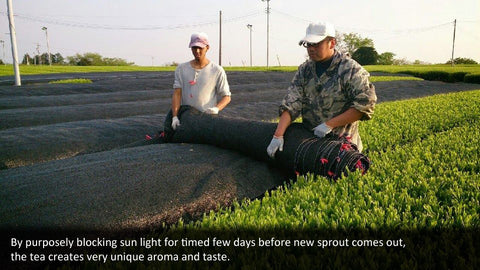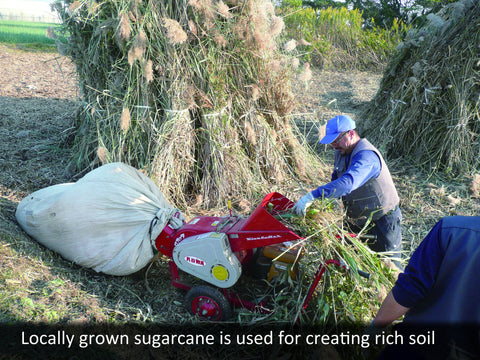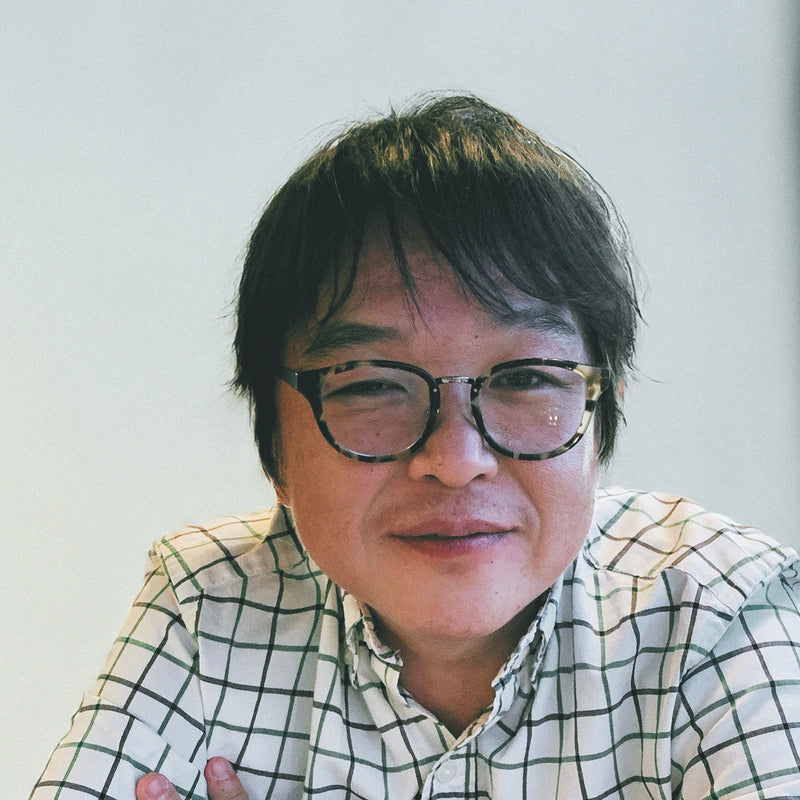Green tea is central to the lives of everyone in Japan. The culture surrounding the harvest and preparation of these tea leaves is complex and deeply rooted in tradition. The green tea harvested in Japan differs in taste and value from the leaves gathered in China and other areas of the world. Here are 10 things about Japanese green tea harvesting you (probably) didn't know.
1. The First Harvest Yields the Most Desirable and Nutrient-Dense Tea Leaves of the Year.
The first harvest, also called the Shincha harvest, begins in May and lasts several weeks into June. This harvest is known to produce the highest-quality green tea leaves, largely due to the time the plant spends idle during the winter. This slow growth during the cold months causes the leaves to be nutrient-dense, resulting in better flavor. The leaves gathered during the springtime have up to three times the amount of L-theanine as those produced in the later harvests. This accounts for the sweet and mild flavor noticed in the leaves gathered early in the year. (You can get fresh-crop Japanese green tea by clicking here.)
2. The Subsequent Harvests Occur Once a Season and Produce More Bitter Leaves.
As established above, the first harvest is held in the highest regard. So what about the rest of the year? Nibancha is the second harvest of the year, taking place in June and July. The summer heat makes the harvest very difficult and taxing on everyone involved. Sanbancha and yonbancha are the third and fourth harvests, respectively. The leaves grow quicker in preparation for these harvests, resulting in lower-quality and less valuable leaves. Despite this, farmers and workers work extremely hard all year to maintain a healthy green tea farm.
3. Kanreisha Curtains are Used to Protect the Plants from Direct Sunlight.
Japan utilizes its own specialized technique for harvesting Gyokuro and Matcha tea leaves. About a month before each harvest, the plants are covered with curtains to limit sun exposure. These curtains, called ‘Kanreisha’, protect the plants from direct sunlight and are known to result in a sweeter flavor. There are two types of curtains used in Japan: direct covering of the plants and a canopy style to block the sun. They are both effective. Shading these green tea sprouts causes them to produce theanine, which is the source of the typical Japanese green tea flavor. This method of production is typically only used in Japan.

4. Each Leaf is Carefully Chosen and Handpicked by Skilled Workers.
Small family operations run most of the farms where the best-quality Japanese green tea leaves are hand-picked during the harvest season. Rows of tea bushes share space with forests and other crops, such as vegetables. Small tea processing plants are associated with these small family operations to sell their harvest, creating slight differences in flavor that Japanese green tea connoisseurs appreciate.

Machine-picked leaves do not result in the same high-quality tea as those that were picked by hand. When hand-picked, sprouts grow from existing forks, giving them a much mellower flavor and a more delicate scent. In what is considered the busiest time of year, thousands of skilled workers gather to evaluate and determine when the ideal gathering time is.
The best time to pick the leaves is when there are three to five sprouts and the leaves are exactly the right size. Harvesting too early means a lesser yield; harvesting too late affects the resulting tea's quality.
Even one day can make a difference and result in bitter leaves, so it is very important that the tea is picked at just the right time. It must be picked rapidly, all at once, so each worker must use their experience to quickly but delicately pluck the leaves.
How Much Tea Can a Tea Picker Pick?
An experienced, skilled harvester can pick only about 6–8 kilograms, or 13–17 pounds, of leaves per day. Since the period from their appearance until the time the sprouts grow too large to harvest is only a few days, it's a very labor-intensive process.

5. Japan Produces a Relatively Small Amount of Green Tea Compared to the Rest of the World.
Despite its large green tea culture, Japan only produces 7% of the world's green tea. The majority of that is consumed within Japan, and only a small portion is exported to other countries. Japan consumes 95% of all its tea production domestically, with only 5% exported to other countries.
6. Traditional Wooden Baskets and Garments are Still Used in Every Harvest to Collect the Leaves.
Woven wooden baskets have been used to gather tea leaves in Japan for generations. This is still the most popular way to collect the leaves. During the harvest season, the fields will be full of men and women carefully placing leaves into their baskets.

The traditional tea picker's garment is light enough to be comfortable yet full enough to withstand the heat of the sun. It's called a chamusume, or tea daughter.
7. There is Tourism for Experiencing Tea Harvesting.
Obubu, as the Japanese green tea is called in the Kyoto dialect, is one of the most expensive teas in Japan, with a cost of about 14,000 yen per kilogram. For over 800 years, farms in the rural Kyoto prefecture have been growing it, and you can help out during harvest season. There are travel agents that can arrange a day visit where you start with a morning tour of the farm and the opportunity to pick your own tea leaves. Staff will show you how best to do it, and you are provided with a traditional wooden basket for your crop. In the afternoon, after lunch, you get to work on processing the leaves by roasting and kneading them to get them ready for a delicious cup of ocha.
8. In the Fall, Workers Begin to Prepare the Farm for Next Year's Harvest.
Autumn follows and is considered the most critical season for farmers. This is the time when Camellia sinensis, the tea plant, grows best, and farmers have hurriedly worked during the late summer and early autumn to enrich the soil and encourage new root growth. The work includes adjusting the soil's pH to the proper levels, deep aeration by mechanical means, and the application of fertilizer to promote strong, healthy growth of the tea bushes.
Green tea trees are pruned during the fall months of October and November. Pruning at this stage ensures that the sprouts of old leaves don't get mixed in and degrade the next year's springtime harvest. Neglecting to prune at the correct time will also be harmful to the plant and result in unhealthy trees.
9. Green Tea Trees Need Special Care During the Wintertime.
Straw, dry leaves, and bamboo husks are all laid out by the trees to help keep them warm during the cold and snowy months. This acts as fertilizer and helps the soil retain a healthy amount of moisture. The trees, especially young ones, are prone to disease and death during the cold months, so farmers must go out of their way to ensure the trees stay warm and healthy until spring arrives. (Read more about the ancient Chagusaba Method, where different plants are used to keep the soil in good shape, which makes the tea taste better.)

10. The Harvests in Japan are Very Different Rrom the Techniques Used in China.
Japan picks certain leaves at different times of the year, while China generally gathers all the leaves at once. China also harvests the buds and stalks, unlike the delicate Japanese tradition of plucking each acceptable leaf individually. After the harvest, Japanese tea leaves are steamed to give them a stronger, richer flavor.
The process of tea leaf harvesting is a complex routine that takes up much of the year. From the first harvest all the way to the last, the farmers in Japan are working tirelessly to produce the highest quality tea they can.
Do you like my post? If so, please join my Green Tea Lover's Newsletter today. By signing up, you get my e-book, "Green Tea Science: Brewing Technique Book," for free. This e-book is a 15-page PDF containing 12 scientifically proven techniques to make your green tea taste better and healthier.
Buy Hand-Picked First Crop Japanese Green Tea Now
Get Free Bonus Books

Sign up for free to the Green Tea Club to get advice and exclusive articles about how to choose Japanese Tea, and tips, tricks, and recipes for enjoying Japanese tea.
About the author
Kei Nishida
Author, CEO Dream of Japan
Certification: PMP, BS in Computer Science
Education: Western Washington University
Kei Nishida is a passionate Japanese green tea connoisseur, writer, and the founder and CEO of Japanese Green Tea Co., a Dream of Japan Company.
Driven by a deep desire to share the rich flavors of his homeland, he established the only company that sources premium tea grown in nutrient-rich sugarcane soil—earning multiple Global Tea Champion awards.
Expanding his mission of introducing Japan’s finest to the world, Kei pioneered the launch of the first-ever Sumiyaki charcoal-roasted coffee through Japanese Coffee Co. He also brought the artistry of traditional Japanese craftsmanship to the global market by making katana-style handmade knives—crafted by a renowned katana maker—available outside Japan for the first time through Japanese Knife Co.
Kei’s journey continues as he uncovers and shares Japan’s hidden treasures with the world.
Learn more about Kei







